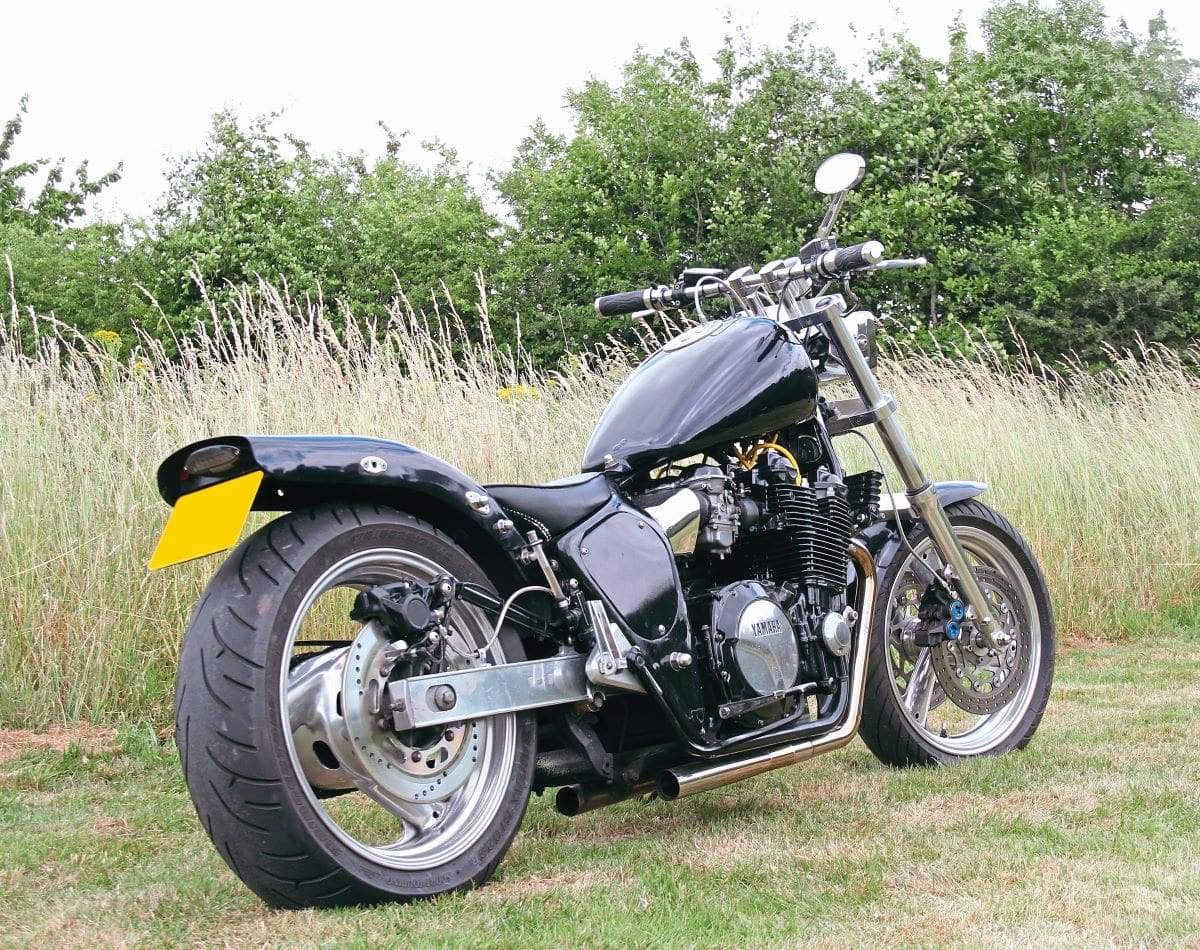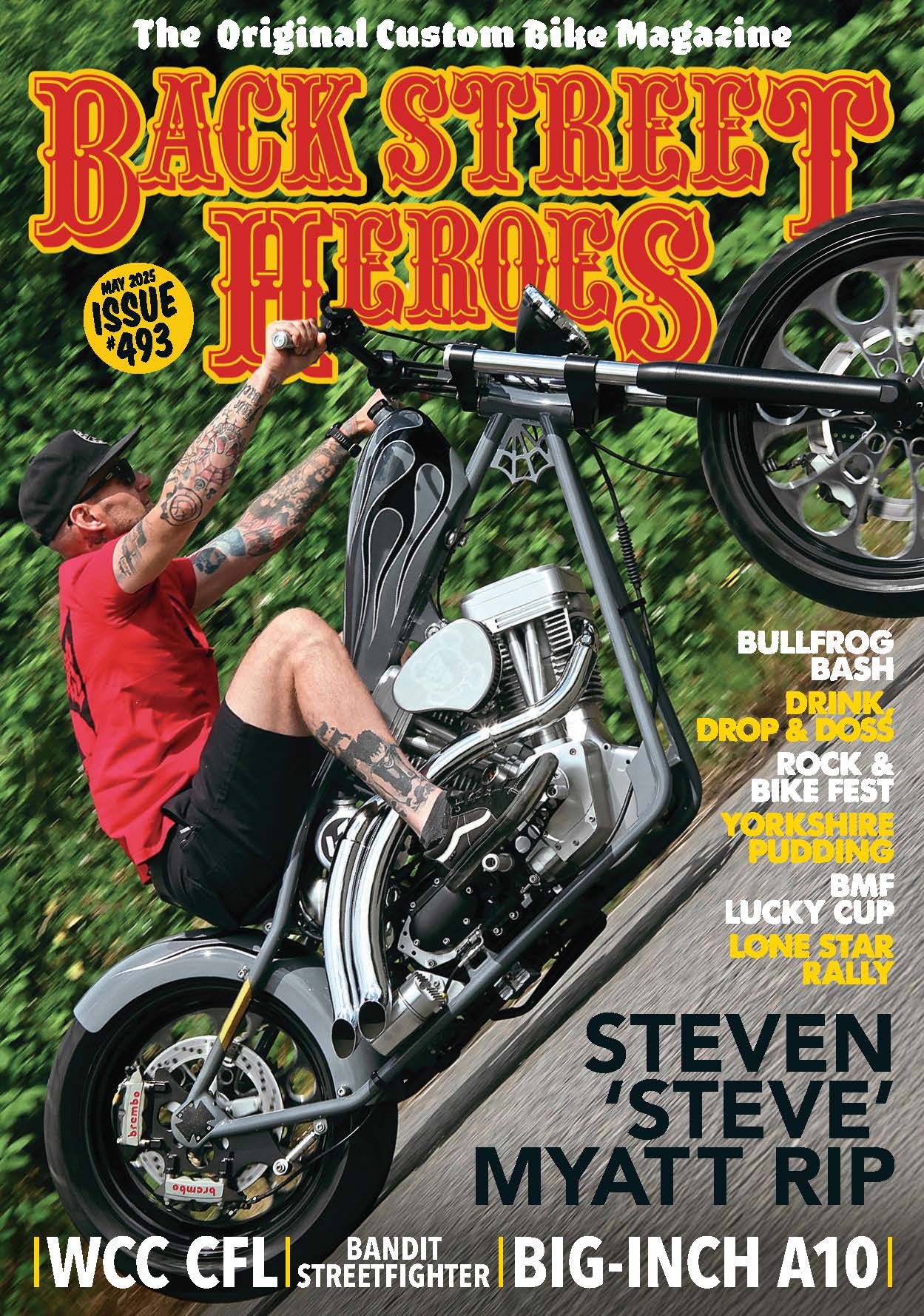Ever since I spotted this bike at, I think, NCC London’s Diamond Day show at the Ace Cafe a number of years ago, I’ve wanted to get it photographed for BSH as it’s a bittersweet part of custom bike history in this country. I’ll let Ted, NCC Honorary, tell you about his bike, shall I?
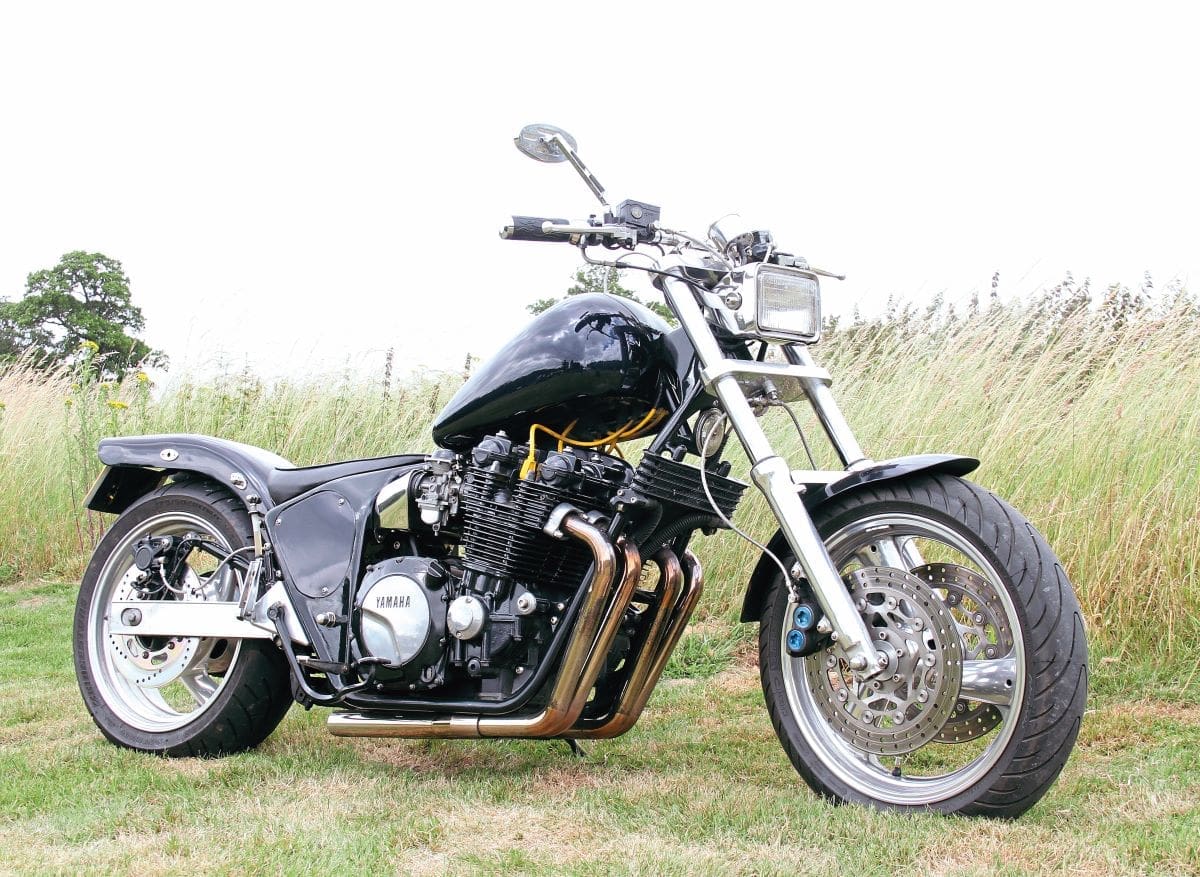
Words by Ted, NCC Honorary Pics by Nik
“The frame was made by the late Ian Kilner of the now long-gone Revolution Motorcycles in Northampton, and was the third off the jig for their signature monoshock FJ frames. Ian and I joined the Chopper Club at the same time – him in Bucks and me in Northants, which he later transferred to. He only lived a few hundred yards from me, and dropped the frame off one night. I wanted a two-inch over wideglide kit for the forks, which Revolution were having made, so I couldn’t get it up on its wheels straightaway, but I put the swingarm and back wheel in and, with the frame and motor balanced on wooden blocks, set about building it – something a bit awkward with no jig to hold everything in place and keep it all square and true; I’d get everything just right and realise the welder was just out of reach, or something’d move just as I was about to strike an arc, but, eventually, I got it done, and I haven’t had alignment issues since so must’ve got everything about right.
A few days later I got home from work and found he’d been round and dropped off my mirror-polished wideglide kit, all carefully wrapped in newspaper. I got it all put together, and could now fit the forks and front wheel, and then stood back to admire my new bike. I used to drop in to Revolution on Saturday afternoons, if I finished work early enough, to see what was going on and where we were going that night, and I’d seen all three frames go on and off the jig, and it was exactly as I’d asked for but, stood in my garage, I could see immediately there was something wrong – I wasn’t happy with how it sat as I’d expected it to be lower. The bottom rails were low enough to the floor that any less’d restrict ground clearance when cornering, granted, but it wasn’t quite right. I spent a few days just looking at it, trying to formulate a way forward, and when Ian asked how it was coming on I fobbed him off, telling him I’d been busy at work, and hadn’t time to do anything. Eventually, though, I came up with a plan.
I got the smallest battery that’d still spin the motor over, and positioned it, roughly, as far down in the frame as I could, and found this gave me a three-inch gap between the top of the battery and the seat rails, so I cut the seat rails off the upright tubes, carefully ground down the welds at the headstock, and removed the top tube and the ’rails in one piece. Then I cut three inches off the uprights, and welded the top tube and ’rails back into place – now the seat was three inches lower and, when I stood back, I was happy with it. The same, however, can’t be said of Ian – when he came round and saw what I’d done, he wasn’t at all impressed that I’d cut up his handiwork (he didn’t think the seat needed lowering), and I don’t think I was every able to convince him it’d turned out right.
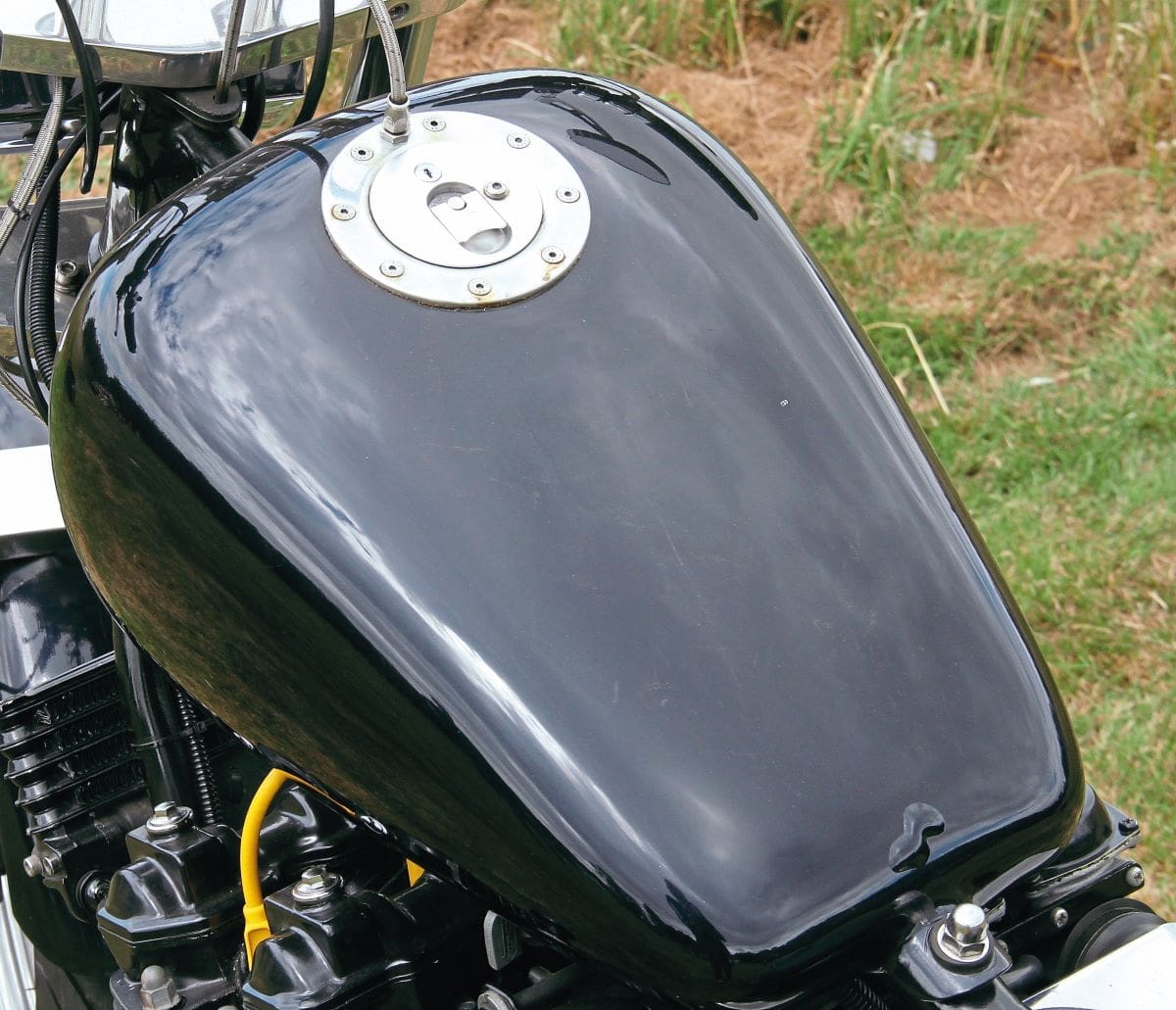
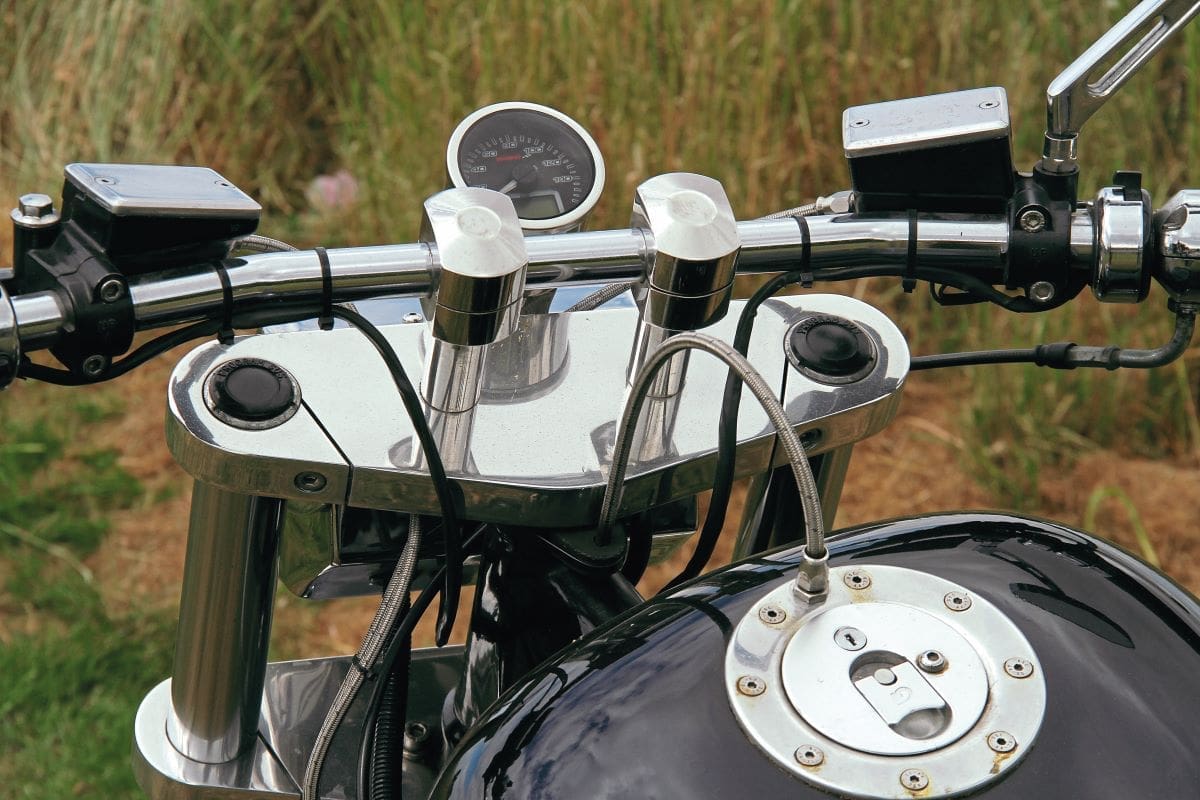
As well as the frame being different from other Revolution FJs, I also didn’t want a bike with loads of off-the-shelf bits, and Revolution, with their handy list of contacts, helped me get stuff made. The rear mudguard’s a wider version of the sleekbobs they used to use, and the headlight, a cheap plastic-shelled one, sits in a one-off stainless surround made by Alders Engineering (sadly no longer with us), who also made me a stainless airbox, and a set of stainless risers that bolt up from underneath and so don’t fill up with water at the top as they all seemed to do back then.
At this point I must confess that, much to the frustration of others, whatever project I’m on at home takes me forever to get done, be it fitting a new kitchen or bathroom, building a Land Rover, digging out and making a drive, or building a bike. I lead a pretty busy life at work and play, and stuff only gets done at home when I have time, and if I feel like it, and as such the bike was only eighty per cent complete in 1997 when Ian died. By this time my wife and I’d become real friends with Ian and his family, spending a lot of time with them, and when Ian died I lost the will to do anything with it. The frame was, pretty much, finished, just needing cleaning up and painting; the polishing was all done, as was the paint; and everything was ready to fit once the frame was painted, but for years the frame sat in a corner of the garage, and everything else was put in the loft so it wouldn’t get damaged.
Then, years later, as my old Kwak was getting very tired, I cleaned the surface rust off, and set to with the P38 to mould over all welds (I wanted nice smooth joints), and gave it several coats of Smoothrite. There was no plan to rush it but, four weeks before the Chopper Club Nederlands run at their clubhouse, the Kwak started making a horrible noise from its bottom end. With my ferry tickets already booked I had to get my finger out and finish the FJ.
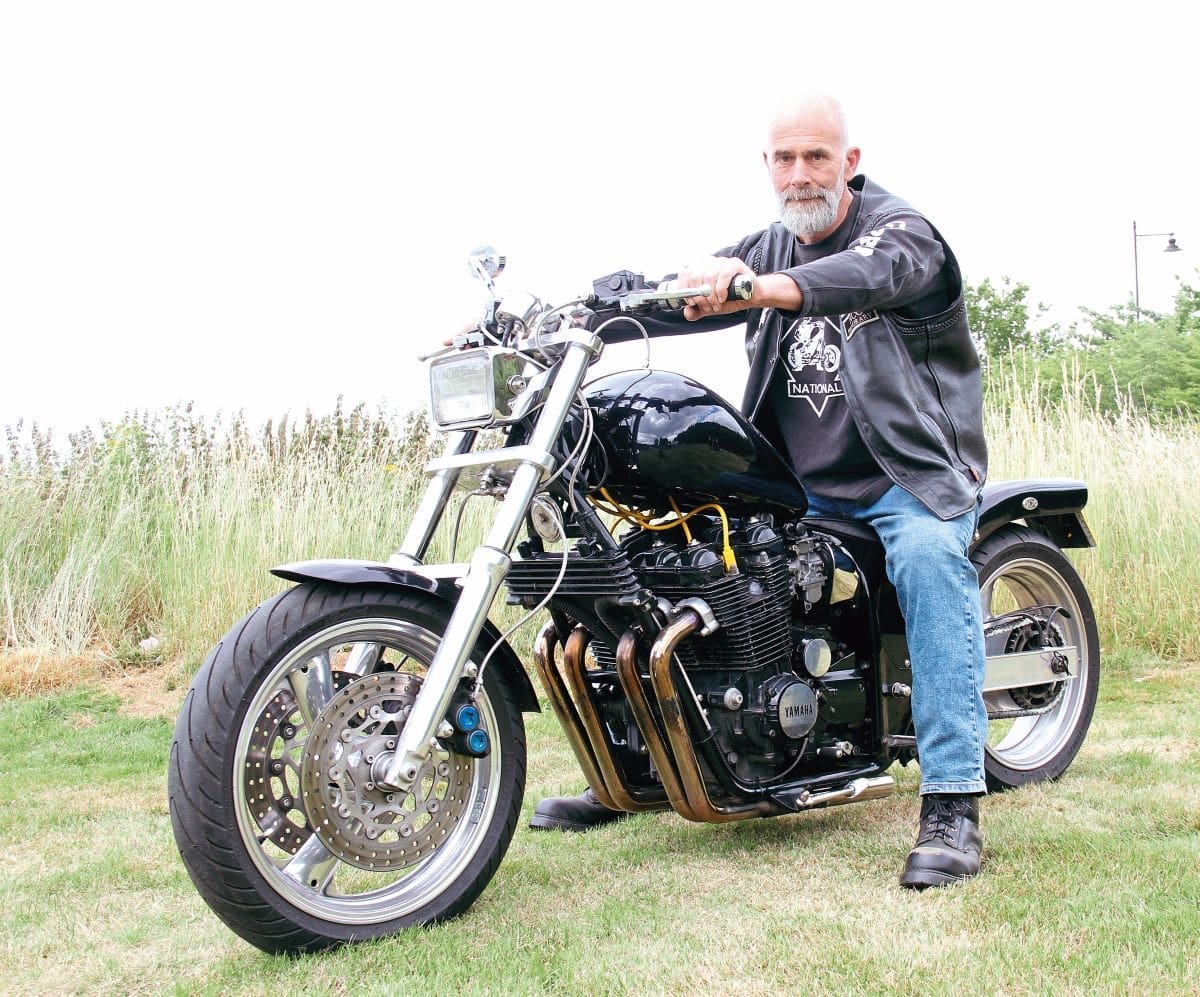
And I did… just. On the Thursday night I was still playing with jets and needles, trying to get it to run right, but on Friday I was off to Holland and, I’m happy to report that, apart from having to tighten the exhaust bolts halfway, it had no problems at all. I rode it as was for a few years, but was never really happy with the back end. When I’d created the very smooth back mudguard (with internal struts and mounts) I’d overestimated the amount of travel needed for the wheel, and left myself with an unsightly two-inch gap. As the old FJ shock was a bit spongy by now, I bought a Hagon one with a known amount of travel, and cut the mudguard mounts off the frame and rewelded them on lower so that, in turn, the mudguard sat lower, with just enough clearance for the tyre. (I also managed to squeeze an FZR1000 rear wheel/tyre into the swingarm, and repainted the whole bike.)
The bike, as it stands now, rides and handles well, and’s done many thousands of miles to Club runs all over the UK and Europe. After all the time and effort I’m finally happy with it, and my only regret is that my old friend Ian never got to see it finished as I think he’d’ve approved and, who knows, may even’ve forgiven me for cutting the frame all those years ago.”
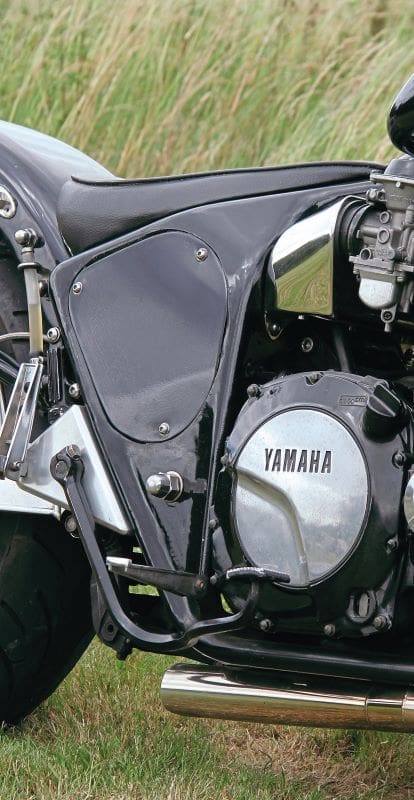
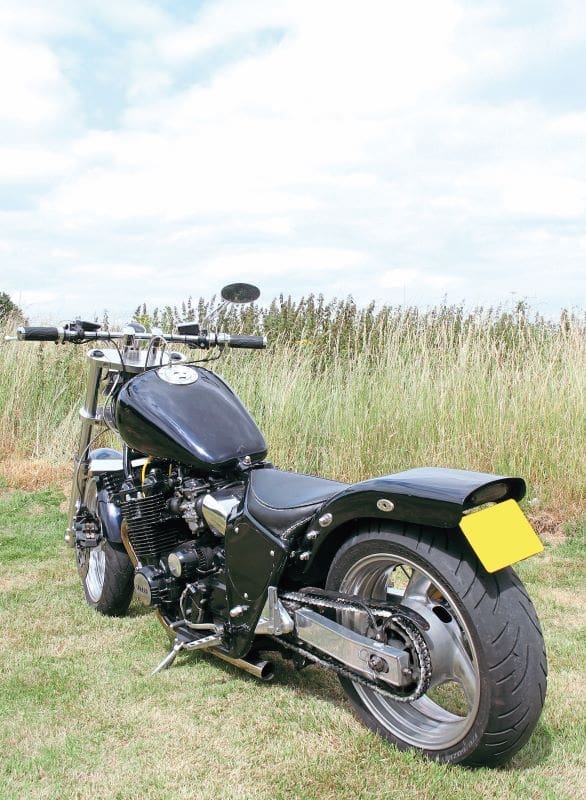
Spec:
1991 Yamaha FJ1200 engine (rejetted carbs, one-off stainless airbox, Dyna coils, one-off stainless four-into-two exhaust, braided oil-cooler lines)/oil-cooler/front wheel/discs/forks/swingarm/rear caliper/master-cylinder/torque arm, custom monoshock frame (modified)/alloy rear-sets/rear brake pedal, Bridgestone Battlax tyres (120/17 front, 170/70/17 rear), Yamaha EXUP front calipers, one-off wideglide slab yokes/fork brace/wheel spindle, aftermarket drag ‘bars, one-off stainless risers, Yamaha XJR1300 master-cylinders, old-style Triumph switchgear, Koso digital speedo, one-off mudguards/seat/alloy side-panels, Quickbob tank (modified), Hagon Products rear shock, Yamaha FZR1000 rear wheel, EBC rear disc, one-off loom, one-off headlight, aftermarket rear light
Finish:
BMW Azurite blue rattle-cans/clear-coat on mudguards/tank by owner, frame, etc., in black Smoothrite by owner, polishing by Revolution Motorcycles, rear wheel polished by Motorshine, chromed side-stand
Engineering:
Wideglide yoke kit/frame by Revolution Motorcycles (modified by owner), bike built by owner, one-off stainless risers/air-box by Alders Engineering, exhausts by Wizz (ex-NCC Cambs)
Thanks to:
“The late Ian Kilner RIP & Steve at Revolution Motorcycles; Wizz; Sooty’s Customs for seat upholstery; & Alders of Northampton…”
